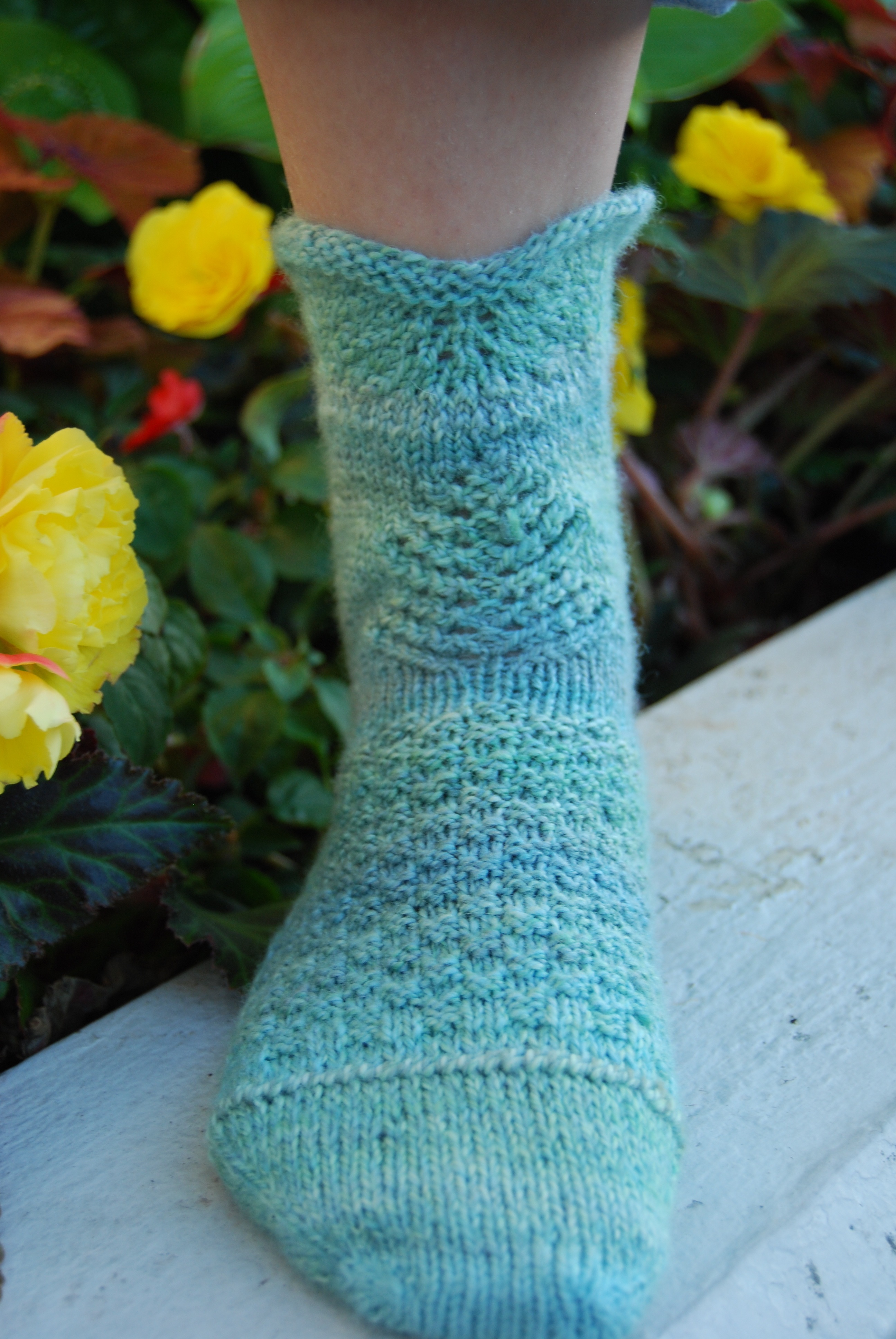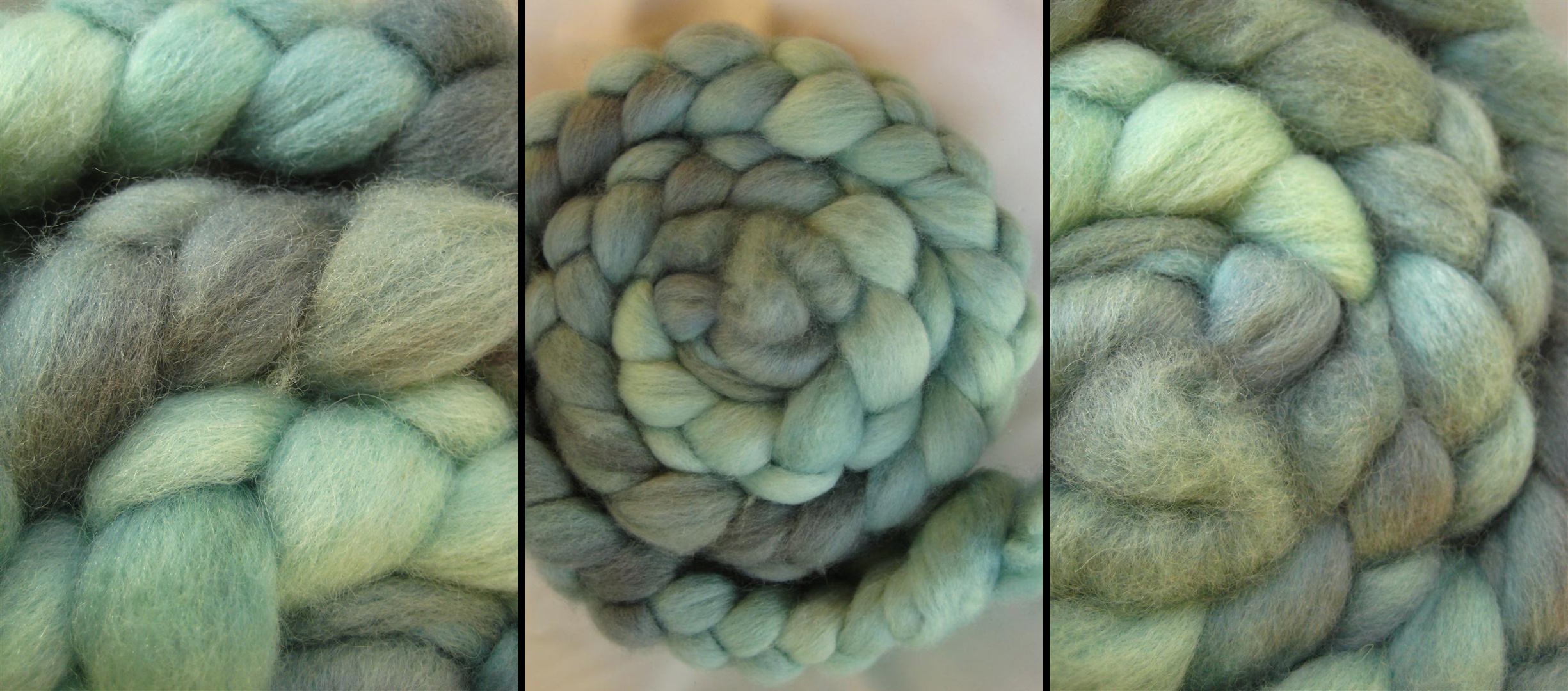Did you get to go to Sock Summit? Because I didn’t and I was just soooooo jealous of everyone who did. All weekend long (all weekend? no, for four days), it seemed like everyone I follow on Twitter was at Sock Summit… and having the time of their fibery lives… and tweeting mercilessly about it. Mercilessly, I tell you! Oh, how I wanted to be there.
…And then, I found out, I kinda was.

.
Well, not me, but my colours. And not just there, but actually there as part of the winning submission in the Design for Glory competition! Ok, a tiny part, but a part… About a week before Sock Summit, my friend Abigail emailed with the news that she and her knitting partners at TAAT Designs had submitted the winning entry, a sock called At The Summit. The design requirement was for a sock that could be knit modularly — in pieces and then assembled at the last minute — by a team in the Fleece to Foot Challenge.

.
And, for their entry, TAAT Designs chose yarn hand-spun from SpaceCadet Creations fiber! When Abigail gave me the news, I sqeeeeeeeeeed so loudly, I think I scared the neighbours! I remember when she bought that fiber and… well, just to think that braid of wool had risen to such heights in the sock stratophere, it kinda blew my mind!
And while At The Summit is a beautiful design and the good ladies at TAAT — Tesia Walker, Allison Janocha, Abigail Horsfall and Trisha Paetsch — are clearly a very talented bunch of knitters… I have to admit, I like to think it was the gently undulating shades of SeaFoam that really made the difference in the end.

.
The pattern for At The Summit is now available on Ravelry, or you can buy it directly by clicking here. TAAT Designs is donating proceeds the Crohn’s and Colitis Foundation of America, in honour of Tesia’s husband Ryan.
Congratulations to Abigail, Tesia, Trisha, and Allison on their beautiful design. Thanks for choosing SpaceCadet colours! And congratulations also to Meridith Todd, who spun such a fantastic yarn.
And congratulations to that braid of SeaFoam fiber. Every single time I pack up an order and send it out, I wonder what that yarn or fiber will become. Never did I think anything I’ve dyed would become something so… Glory-ous!




















